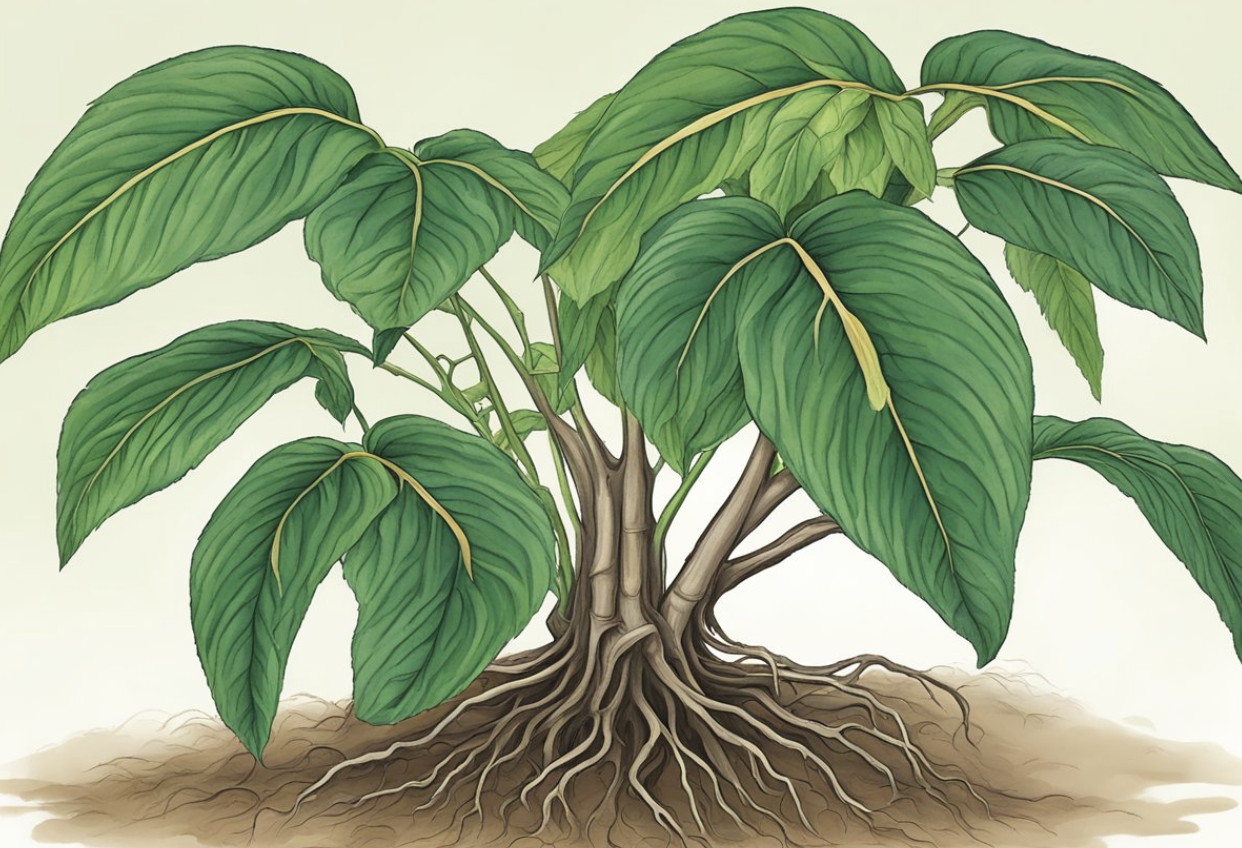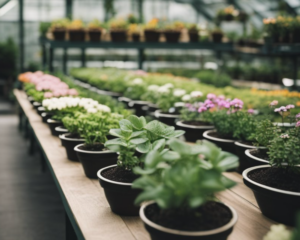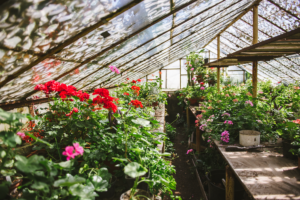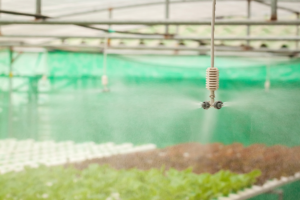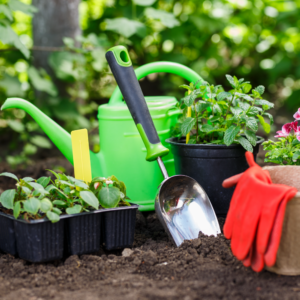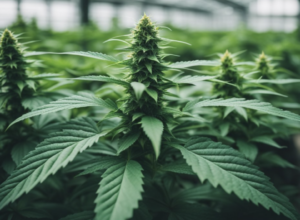Dealing with root rot can be a real headache for any plant lover. The key to treating root rot is to catch it early and act fast. I’ve battled this problem before, and through trial and error, I’ve found some effective ways to get my plants back to good health.
First, you need to take the plant out of its pot and inspect the roots. Healthy roots are white, while rotten ones are brown and mushy. Cut away all the affected roots with a clean, sharp tool to prevent further spread. Next, repot the plant in fresh, well-draining soil, and make sure the pot has good drainage.
Water the plant carefully afterward. Let the soil dry out between waterings to avoid excess moisture, which is what caused the rot in the first place. By following these steps, you can save your plant and get it thriving again.
Understanding Root Rot
Root rot can harm plants, leading to wilting, yellow leaves, and stunted growth. It’s usually caused by fungi in the soil, but other pathogens can be involved too. Identifying and addressing root rot early is key to saving your plants.
Causes of Root Rot
Root rot happens when roots stay too wet for too long. This often comes from overwatering or poor drainage. When soil is waterlogged, it creates a perfect environment for fungi to grow.
Fungi like
- Pythium
- Phytophthora
- Fusarium
- Rhizoctonia
Soil that’s too dense or heavy also contributes to root rot. Roots need air to breathe. If the soil is compacted, the roots can’t get enough air, making it easier for fungi and other pathogens to attack.
Common Root Rot Pathogens
Many fungi and fungi-like organisms cause root rot. Here are some main ones:
- Pythium: Affects many plants, causing brown, mushy roots. Stunted growth and yellow leaves are common symptoms.
- Phytophthora: Leads to severe root damage, discolored leaves, and plant wilting.
- Fusarium: Causes roots to turn brown and decay.
- Rhizoctonia: Attacks roots, making them rot and plants wilt.
These pathogens spread quickly in wet conditions. Keeping soil properly drained and avoiding overwatering can help prevent their spread.
Identifying Symptoms of Root Rot
Look for these signs to catch root rot early:
- Discolored leaves: Leaves may turn yellow or brown.
- Stunted growth: Plants stop growing well.
- Wilting: Leaves and stems droop, even if the soil is moist.
- Brown roots: Healthy roots should be white or light-colored. Brown, mushy roots are a bad sign.
- Damaged roots: Roots may appear slimy or fall apart easily.
If you notice these symptoms, check the roots. Carefully remove the plant from the soil and examine the roots for any brown, mushy, or otherwise unhealthy-looking roots. Early detection is crucial to treat and save the plant.
Prevention Strategies
To keep plants healthy and avoid root rot, focus on how you water them, the type of soil you use, and proper containers with good drainage. These steps will help keep your roots happy and free from rot.
Proper Watering Techniques
I’ve learned that watering plants correctly is crucial. Overwatering is a big reason for root rot. So, I always check the top inch of soil. If it’s dry, I water. If not, I wait a day or two. I stick to a regular watering schedule but adjust it based on how dry the soil feels.
Using a soil moisture meter helps me keep track of moisture levels deeper in the pot. It’s a simple tool, but it makes a difference. This way, I’m sure my plants aren’t sitting in soggy soil, which can drown the roots.
Soil Selection and Treatment
Choosing the right soil type is another key. I always go for well-draining soil to prevent root rot. Regular potting soil often isn’t enough on its own. I mix it with things like perlite, sand, or pumice. These materials help create air pockets, which improve drainage.
Sometimes, I even add compost to improve soil health. It adds nutrients and promotes healthy root growth. Also, I make sure to avoid reusing old soil, as it might carry diseases or be compacted, preventing proper drainage.
Container and Drainage Essentials
The container I choose plays a big role in preventing root rot. I always pick pots with drainage holes. These holes let excess water escape, which keeps the roots from sitting in water. No drainage hole? No thanks. Watering a root-bound plant is like asking for trouble.
For extra measure, I use pots made from breathable materials, like terracotta. They allow water to evaporate more easily. Sometimes, I also place a layer of gravel at the bottom to further aid drainage, but it’s not always necessary if the soil and pot have proper drainage.
Keeping these strategies in mind helps me keep my plants thriving, free from the dreaded root rot.
Effective Treatment Approaches

When treating root rot, it’s crucial to isolate the infected plants and disinfect your tools. You also need to trim away affected roots and use fungicides properly.
Isolating Infected Plants
First, I always isolate the infected plants to prevent spreading the disease. I place the sick plant away from healthy ones. Environmental adjustments are important, and ensuring proper light levels and watering needs helps create an environment where root rot is less likely to return.
I often move the plant to an area with better air circulation. Infected plants need more oxygen around their roots. Moisture levels matter too; make sure the soil dries out between watering sessions. Changing these factors can make a big difference.
Trimming and Disinfection
Next, I use sterilized shears or pruning shears to remove the infected parts of the plant. It’s critical to disinfect the tools before and after. Otherwise, you could spread the infection.
After pruning, I treat the remaining roots with a fungicide like Bacillus subtilis. I repot the plant in fresh, sterile soil to give it a clean slate. This helps in removing any remaining infection in the old soil.
Adjust your watering practices to avoid overwatering and make sure the plant has proper drainage. This ensures that the roots have enough oxygen which is key in preventing root rot.
Recovery and Post-Care

After dealing with root rot, it’s important to focus on promoting healthy re-growth and keeping a close eye on the plant’s health. Here’s some specific advice to help your plants bounce back.
Promoting Healthy Re-Growth
First, I replant the affected plants in fresh, well-draining soil. This step is crucial because it reduces the risk of the rot returning. I also add some organic matter, like compost, to help with nutrient absorption. Compost introduces beneficial microorganisms that aid plant health.
Watering should be adjusted to maintain proper soil moisture without overdoing it. Overwatering can cause root rot again. I usually water just when the top inch of soil feels dry to the touch.
Introducing some balanced fertilizer helps in providing essential nutrients. Look for fertilizers with a good amount of nitrogen which promotes green, leafy growth.
Monitoring Plant Health
Once the plant is settled in its new soil, I keep an eye on it daily. Signs of recovery include new leaf growth and a stable, strong stem. It’s important to watch for any symptoms of plant disease, such as yellowing leaves or any odd spots.
Checking soil moisture regularly is key. I use a moisture meter to ensure the soil is neither too wet nor too dry. This tool helps in maintaining the right balance.
I also look out for pests and diseases. A healthy plant can resist them better, but sometimes extra help, such as a mild pesticide or insecticidal soap, might be necessary.
Keeping these steps in mind helps the plant recover efficiently and continue to grow healthily.
Special Considerations
When treating root rot, the approach can differ based on where your plants are located and if the issue keeps coming back.
Indoor vs Outdoor Plant Care
For indoor plants, the key is managing moisture levels. I’ve learned that excessive watering or poor drainage can lead to wet soil conditions. Using pots with drainage holes helps. For houseplants like lilies, use a well-draining mix. Keep an eye on plants and water only when the top inch of soil is dry.
For outdoor plants like trees, shrubs, or soybeans, you must deal with heavy soil and wet soil conditions. Adding compost can improve drainage. In my garden, I’ve seen that raised beds help reduce water problems. Keep an eye on the forecast and avoid watering before heavy rain.
Dealing with Persistent Problems
Sometimes, root rot keeps coming back due to fungal diseases or continuously wet conditions. I’ve found using fungicide can help, but it’s not always enough. Removing affected plants can stop the spread.
For plants in poorly draining areas, changing the soil or adjusting watering schedules is vital. Make sure soil isn’t too acidic, as poorly draining acid can contribute to dampness. Sometimes, removing and replacing the soil is the best option.
In my experience, these adjustments can make a big difference in managing root rot and keeping plants healthy.
Advanced Insights
Root rot can cause serious damage to plants, leading to symptoms like yellowing leaves and wilt. It’s important to understand both the technical details of root decay and what’s new in plant pathology to tackle this issue effectively.
Technical Aspects of Root Decay
Root decay is mainly caused by pathogens like fungi and molds. These can include Fusarium, Pythium, and Rhizoctonia. They attack the roots and make it hard for the plant to get water and nutrients. This often leads to wilted leaves or even leaf drop.
Spores from these harmful fungi are usually in the soil. They spread easily, especially if the soil is too wet. This moisture helps the spores grow and infect the roots. In some cases, fungus gnats can also carry these pathogens from one plant to another.
Signs of root decay can be very visible. You might see the yellowing of leaves or notice the plant wilting despite regular watering. The roots themselves often look mushy or discolored when infected.
Conclusion
Treating root rot can initially seem daunting, but with the right steps, it’s entirely manageable. Begin by recognizing the signs early—soft, mushy roots and yellowing leaves are key indicators. Carefully remove the infected roots using clean tools, and replant the healthier sections in well-draining soil. Be mindful of your watering habits, as too much water can exacerbate the problem. Observe your plants closely for signs of recovery. Remember, patience is essential; treat yourself and your plants with care and understanding. For more in-depth gardening tips and advice, click below to explore our other articles to elevate your gardening skills to the next level.

